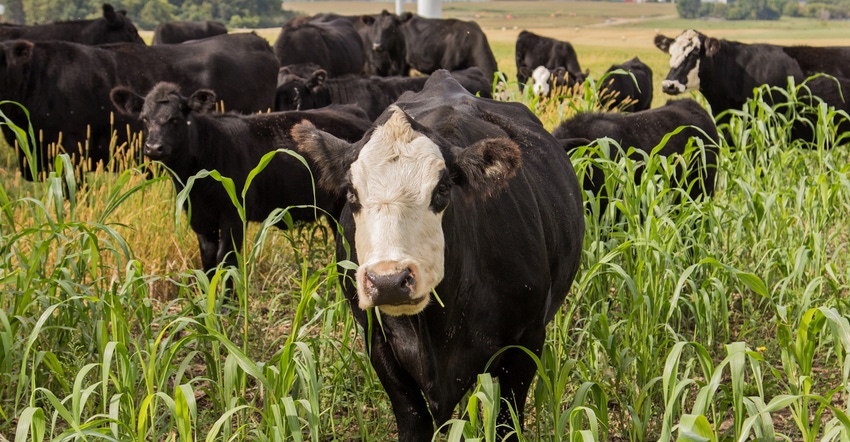
Need a boost to your summer pasture forage production? Consider adding summer annuals in June for late-season production.
Gene Schmitz, University of Missouri Extension livestock specialist, says there are two types of summer annual forages that work well in Missouri pastures. He outlines just how to plant and manage these annuals:
Sudangrass and sorghum-sudangrass. Schmitz says both can be seeded as late as June 30, but he finds the best results with earlier seeding dates. These should be drilled at about 20 to 25 pounds per acre.
“Allow 45 to 60 days between seeding and first grazing,” he adds. “Grazing can begin when forage height reaches 24 inches.”
Farmers should delay haying sudangrass and sorghum-sudangrass until it reaches 30 to 36 inches in height. At harvest, Schmitz recommends allowing 10-inch stubble. Apply 60 to 90 pounds of nitrogen at establishment and 40 to 60 pounds after each cutting or grazing. Phosphorus and potassium should be applied to soil-test.
“Nitrates and prussic acid can be issues,” Schmitz says, “but management and rainfall dictate if or when these will be of concern.”
In general, he explains plants will accumulate nitrates during dry or drought conditions. Normal rainfall patterns should help reduce this concern. “Prussic acid is present in new growth, so following the recommended harvest heights should avoid this problem,” Schmitz says.
The quality of sudangrasses can be good for livestock as long as it is harvested before the plants get tall and stemmy.
Pearl millet. This summer annual forage is also an option for hay or grazing. Schmitz recommends drilling pearl millet at 15 pounds per acre. It can be planted through the middle of June.
Pearl millet is tolerant of acidic soils and drought. “Grazing can begin when it reaches 18 to 30 inches tall,” he says. “Haying can be done when it reaches 36 inches tall.” He adds that farmers should leave 8 to 12 inches of stubble after harvest.
Pearl millet does not contain prussic acid but can accumulate nitrates. Days from seeding to first grazing and nitrogen fertilization recommendations are the same as mentioned above for the sorghums.
Postharvest management
Schmitz warns that hay curing can be complicated with either sudangrasses or pearl millet. “Mower-conditioners should be used to harvest these crops,” he explains. “Use more roller pressure than used on other hay crops for these forages. It is almost impossible to overcrush the stems.”
A couple of years ago, a producer shared with Schmitz harvest results for pearl millet. He harvested the crop for hay and left 4 to 5 inches of stubble height on part of the field. He added shoes and spacers to the mower-conditioner and raised the cutting height on the rest of the field to 10 inches.
About 10 days after hay harvest, the 4- to-5-inch stubble had 6 to 8 inches of regrowth. “The 10-inch stubble height had over 2 feet of regrowth,” Schmitz says. “Cutting and grazing heights matter.”
University of Missouri Extension contributed to this article.
About the Author(s)
You May Also Like






